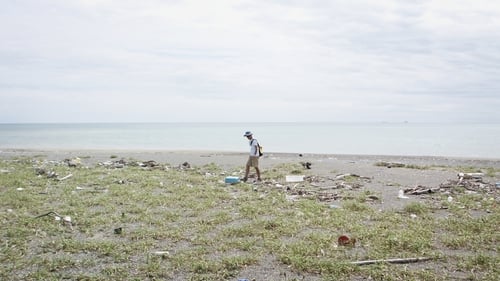
Cinematography
The movie follows today’s beachcombers in Great Britain, the Netherlands, and Japan. The same endless piles of trash left by humans cover all the shores. Our shared ocean is loaded with time travelers made of plastic, the fruit of our throwaway culture and our indifference. They are the seeds of destruction, as they end up in the entrails of creatures living in the sea. Most of the beachcombers share the same worries about the environment. Beside the plastic trash, many travelers drift between continents, such as various plants’ seeds. Like all species, they look for new living environments where they could survive on a warming planet.

Director of Photography
‘My dad saw a monster here. When he was a kid.’ · ‘A monster?’ · ‘Yeah, a monster. It moves between this world and the next.’ Ao lives with his mother and little sister Kii on Sado Island in Japan. He misses his father, who recently disappeared without a trace – although not much is spoken about it. While their mother tries to deal with the loss in her own way, Ao and Kii run across the island and scream at the ocean. In the mysterious Sayoko, who inconspicuously swipes books from the school library, Ao finds a confidant. Few words are needed between the two reticent, dreamy children: together, they at once feel less alone. Against the striking backdrop of an industrialised coastal town, Tetsuya Tomina's poetic film tells a tale of dreams, loss and monsters.

